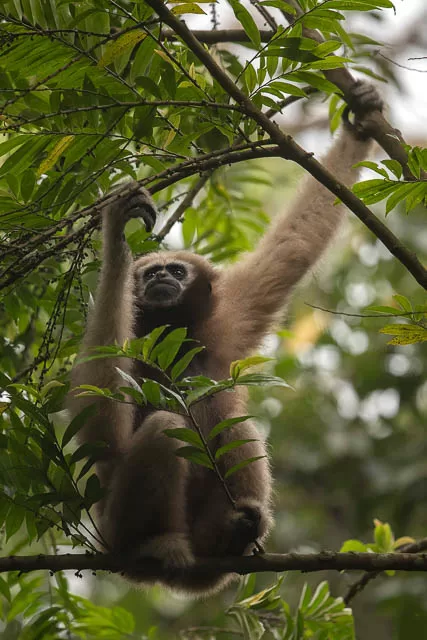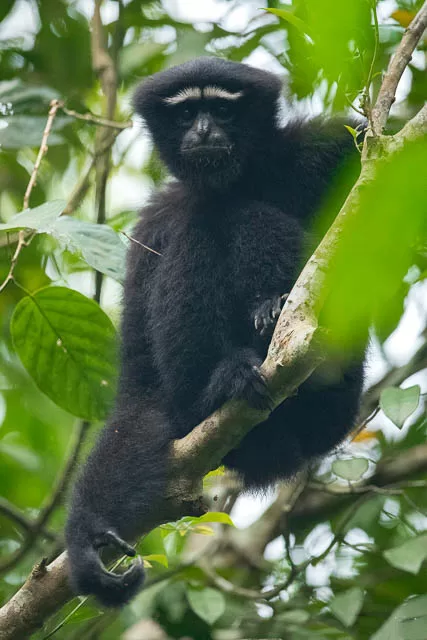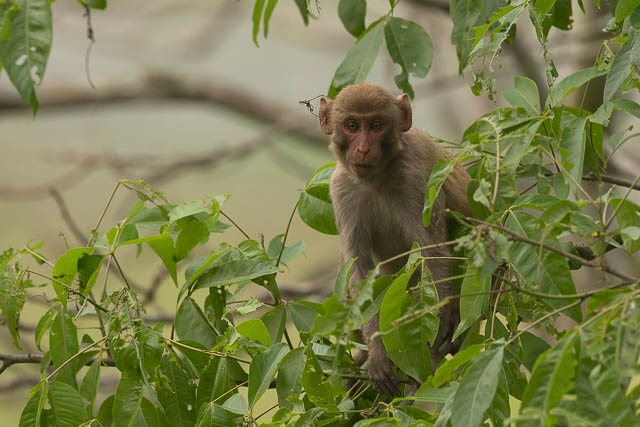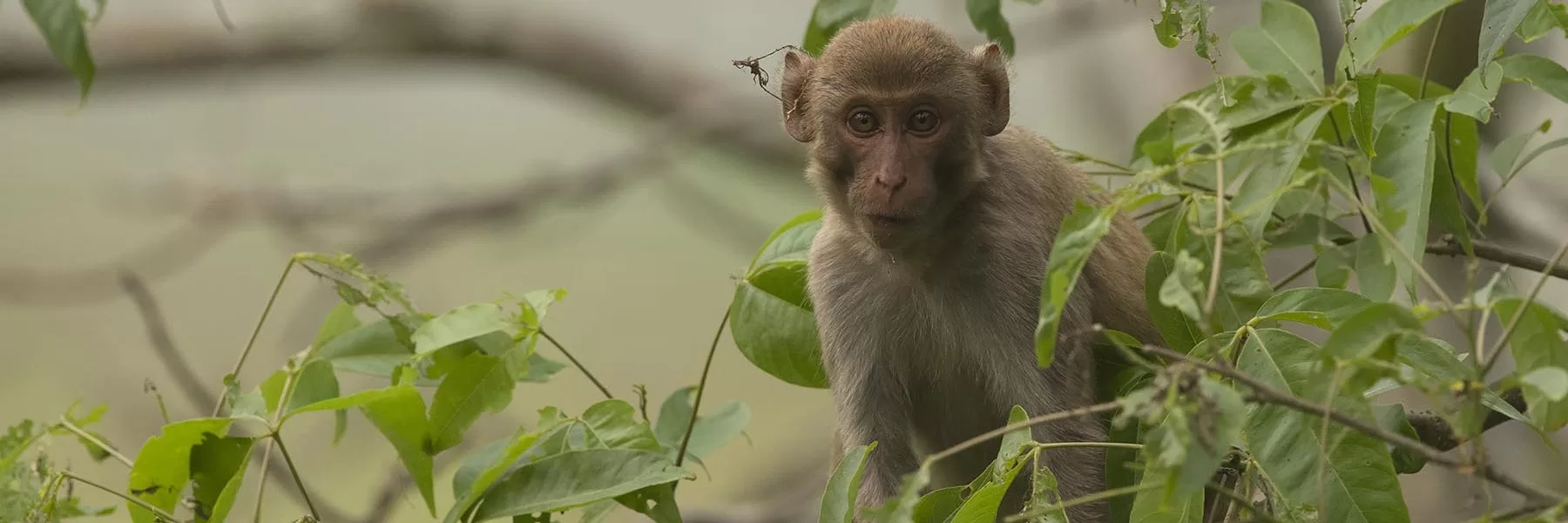The Hoollongapar Gibbon Sanctuary is special in many ways. For one, it hosts India’s only ape species – the hoolock gibbons, and Northeastern India’s only nocturnal primate – the Bengal slow loris. Then, very unusually, it is an isolated forest tract set amidst tea gardens and small villages, unlike most of the Indian forests which are often connected to each other through some forest corridor. Thirdly, it hosts nearly 50% of the 13 Monkey species found in India. Fourthly, it has a bio-diversity that very few forests in India can match. We already talked about apes and slow loris, then it has leopard, 3 types of civets, jungle cat, 4 types of squirrels, elephants and around 220 species of birds.
To me, it is special for more reasons. Out of more than 60 national parks/sanctuaries in India that I have visited. Hoolock Gibbon is one of the most beautiful forests I have seen. It has only walking “safaris”, that means the forest is so dense that there is no possibility of covering it with a vehicle. We have to walk with a local forest guard cum guide. This is a rarity in India particularly when this sanctuary hosts big cats such as Leopard and also the Elephant. What makes this walking experience special is while you make your way through the thick canopy in search of wildlife, you are greeted with calls of different species of monkeys and birds high above the trees. There are parts of this forests where one cannot see the sky, it is so dense. Being left alone in a dense forest with local fauna and bird sounds is a feeling that cannot be described.
During my first visit here, early morning we had first set out in search of the Hoolock Gibbons as they are the star attractions of this forest. Some of the trees in this forest go as high as 90 feet, and typically most Monkey species are found high up in the trees. Though most spectators are happy enough to sight them from the safety of ground, but for photographers there are always additional challenges of angle and light shooting from ground towards sky! That is another debate, but moving forward, within 45 mins our guide was able to spot a Hoolock couple, running around the branches and eating. It is interesting to add that these apes can branchiate at upto 55kms per hour and cover upto 6 metres with just one swing. We stayed with this family for a good 30 minutes when the guide shouted “pig tailed macaque”. Sure enough, we sighted a mother with cubs after a 5 minute short walk. Unlike the Gibbons, it was very shy and ran away at our first sight, before we could click a frame.
I was quite happy and congratulating myself, 2 new species within an hour, not bad! The search continued and soon enough we got a family of stump tailed macaque. The males are brown in color and have a pink face and look very distinct from rest of Monkey species in India. After that we sighted a capped langur on our way back and then a family of Rhesus macaque. It was an overcast day and we could not see many birds around, though calls were omnipresent. We were enquiring about Slow Loris sightings and the guide told they were regularly seen in the night but tourists are not allowed to venture inside after sunset.
Making all the effort for trekking and spotting wildlife on your feet leaves you with a very accomplished feeling. Apart from efforts of local forest department, what has perhaps helped this park flourish is that it is still free from commercialisation due to accessibility issues and no vehicles plying inside the forest. I hope that this little gem of a forest remains the way it is and nourishes its inhabitants for a long time.



hoolock gibbon male

stump tailed macaque

pig tailed macaque











